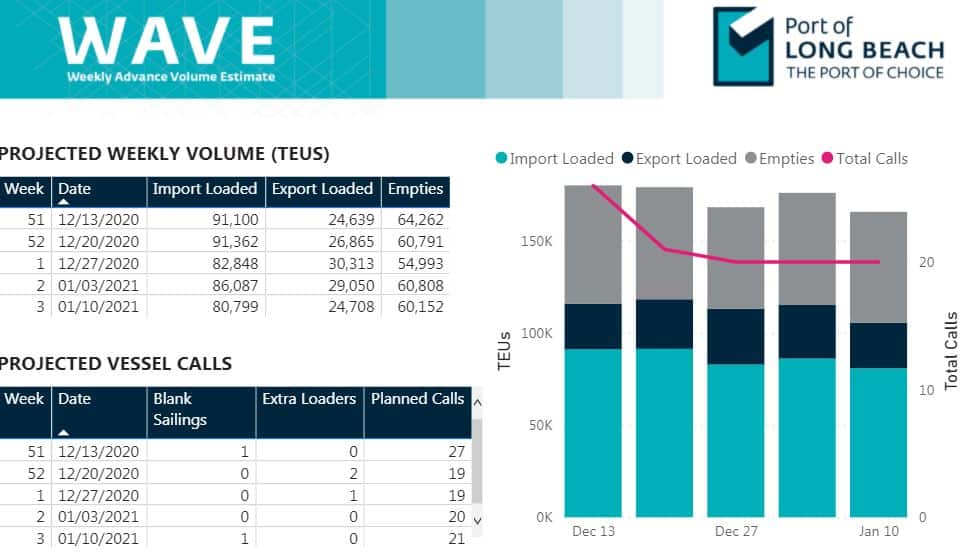The Port of Long Beach is changing the way cargo information flows.
“We’ve changed how we post our cargo snapshot,” the port tweeted Monday, announcing it would publish “the new WAVE (Weekly Advance Volume Estimate) report on Monday mornings instead of a daily snapshot.”
The tweet included a link to this week’s WAVE report.
The Port of Long Beach said in a press release that it had launched the report “to shine a spotlight on anticipated cargo flow and widely share key data with every link in the supply chain. WAVE provides goods movement stakeholders like trucking companies and chassis providers with forward-looking data they need to better cope with surging cargo volume and other challenges.”

The port just marked its best November ever, moving 783,523 twenty-foot equivalent units (TEUs), a 30.6% jump from the same month last year.
The weekly report will project cargo container volume and vessel calls several weeks ahead and include estimates of categories of cargo, such as exports, imports and empties, the port said.
“Sharing this information is highly beneficial for the supply chain, especially as we cope with both seasonal and unanticipated peaks and valleys in cargo volume,” Port of Long Beach Executive Director Mario Cordero said in a statement.
The port added that the WAVE report “will be assessed, updated and improved” on an ongoing basis.
The Port of Long Beach said it has been acting to help its partners better handle record amounts of cargo. It recently opened a STOR — short-term overflow resource. Terminals can use the resource to store empty containers or stage loaded containers for faster delivery. The port said it also is collaborating with terminal operators to promote and prioritize dual transactions to optimize the flow of goods by truck.
Increased volumes — and cargo-handling woes — are expected to last into the new year.
“With news of widespread port congestion, and with carriers not letting off capacity-wise until at least Chinese New Year, shipping might not see improving schedule reliability until Q2 2020,” Sea-Intelligence CEO Alan Murphy told American Shipper’s Greg Miller.
Port of Long Beach goes on the record with another No. 1
Port of Long Beach again breaks container record
Long Beach bridge, decade in the making, opens Monday
Click for more American Shipper/FreightWaves stories by Senior Editor Kim Link-Wills.







